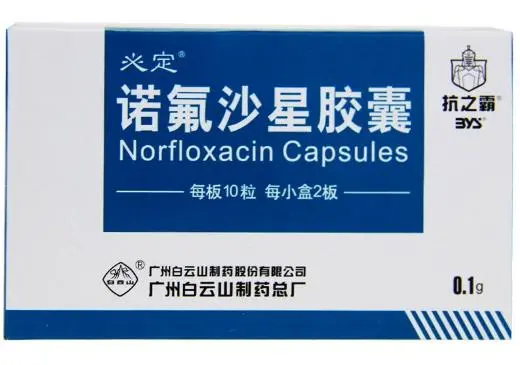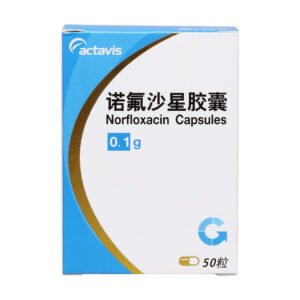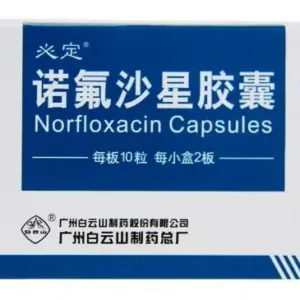Norfloxacin Capsules
Effects and efficacy:
Used to treat urinary tract, respiratory tract, gastrointestinal tract, gynecological, surgical, dermatological, skeletal system infections and prostatitis caused by sensitive bacteria. Used to treat gonorrhea and typhoid and Salmonella infections caused by drug-resistant strains. Used to treat skin and soft tissue infections and wound infections caused by Gram-negative bacteria. Used to treat eye infections caused by sensitive bacteria. Also effective against mycoplasma and chlamydia.
Usage and dosage:
Acute simple lower urinary tract infections caused by oral Escherichia coli, Klebsiella pneumoniae and Proteus mirabilis 400 mg once, twice a day, for a course of 3 days. Simple urinary tract infections caused by other pathogens The dosage is the same as above, and the course of treatment is 7 to 10 days. Complicated urinary tract infections The dosage is the same as above, and the course of treatment is 10 to 21 days. Simple gonococcal urethritis Single 800 to 1200 mg. Acute and chronic prostatitis 400 mg once, twice a day, for a course of treatment of 28 days. Intestinal infection: 300-400 mg once, twice a day, for a course of 5-7 days. Typhoid Salmonella infection: 800-1200 mg a day, divided into 2-3 doses, for a course of 14-21 days.
Adverse reactions:
Gastrointestinal reactions are more common, which may manifest as abdominal discomfort or pain, diarrhea, nausea or vomiting. Central nervous system reactions may include dizziness, headache, drowsiness or insomnia. Allergic reactions: rash, itchy skin, occasionally exudative erythema multiforme and angioneurotic edema. Occasionally: epileptic seizures, mental abnormalities, irritability, impaired consciousness, hallucinations, tremors; interstitial nephritis manifestations such as hematuria, fever, rash; phlebitis; crystalluria, more common in high-dose applications; joint pain. A small number of patients may experience elevated serum aminotransferases, increased blood urea nitrogen, and decreased peripheral blood leukocytes, which are mostly mild and transient. Serious and other important adverse reactions: Q-T interval prolongation, toxic exfoliative necrosis, Stevens-Johnson syndrome, thrombocytopenia, hepatitis, tendinitis, tendon rupture, peripheral neuropathy, epileptic seizures, interstitial nephritis, etc.
Drug contraindications:
Allergic to this product is prohibited. It is prohibited during pregnancy and lactation. It is prohibited for children.
Share:
Products
Our offers
Health Classification
Let us work together to protect precious health






























